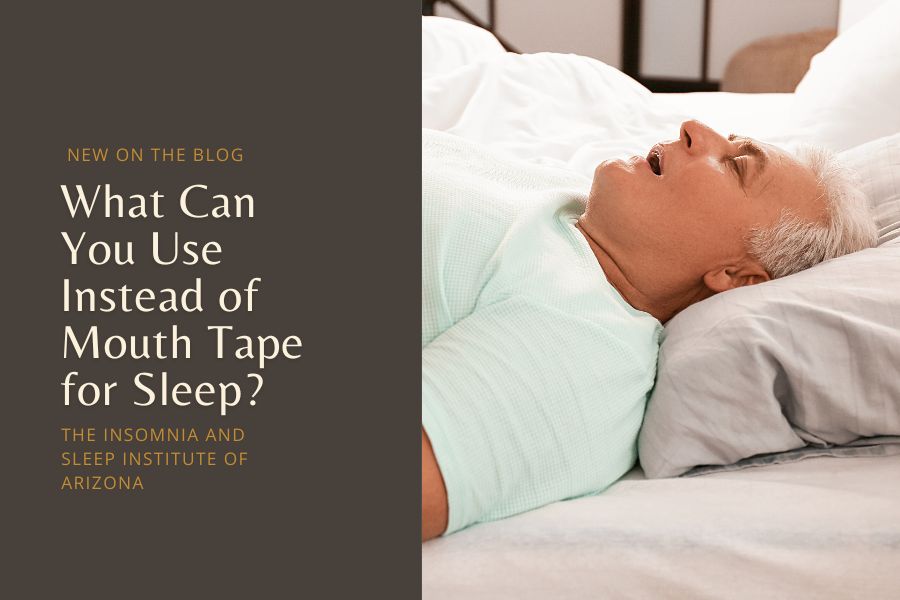There are effective alternatives to mouth tape that can help improve sleep quality and address issues like snoring and mouth breathing. These options are designed to promote better airflow and overall comfort during sleep, offering proven benefits without the uncertainty of mouth taping.
What Is Mouth Taping?
Mouth taping is a practice that involves placing adhesive tape over the lips to encourage nose breathing during sleep.
Some people believe that taping your mouth shut while sleeping can help with things like dry mouth, snoring and even sleep apnea. Breathing through your nose is thought to give you better oxygen levels and balance CO2, which could improve how you sleep. Some say this might even be good for your heart.
Even though mouth taping is becoming popular in wellness trends, there’s little scientific proof to support it. Many experts recommend caution until more research is available. The claims remain limited. There’s not enough strong research to prove it. Mouth taping for sleep hasn’t been fully confirmed as safe or effective yet. More solid evidence is needed before it can be recommended.
For now, most sleep experts don’t recommend mouth taping for health or wellness, as its risks — including discomfort, difficulty breathing or even skin irritation — can outweigh any potential benefits.
Common Reasons for Mouth Breathing During Sleep
Mouth breathing during sleep can occur for several reasons. Many of which are linked to underlying health issues. Here are some common causes:
- Nasal Congestion: Many people breathe through their mouth when they sleep because their nose is blocked or congested. This can happen due to allergies, colds, or sinus infections. When your nose is blocked, it’s hard to breathe through it. Studies show that people with chronic nasal congestion develop mouth breathing habits at night.
- Deviated Septum: A deviated septum happens when the wall between your nostrils shifts, making it harder to breathe through one or both sides. This can lead to mouth breathing, especially when you’re lying down. It’s a common issue that affects airflow and can be uncomfortable. Experts estimate that up to 80% of people have some degree of septal deviation.
- Enlarged Tonsils or Adenoids: Enlarged tonsils or adenoids can block the airway, especially in children, leading to mouth breathing during sleep. It’s also a common cause of sleep apnea in younger populations.
- Sleep Apnea: Obstructive sleep apnea (OSA) often leads to mouth breathing. This happens because the airway gets blocked during sleep. To keep breathing, the body switches to using the mouth. OSA is a serious condition that affects both men and women. It’s important to get checked if you have symptoms.
- Habitual Mouth Breathing: Mouth breathing can become a habit, even when there’s nothing blocking the nose. This often causes dry mouth, snoring and restless sleep. Over time, it can seriously affect sleep quality.
Understanding the cause of mouth breathing is important. Addressing the underlying issue — whether it’s allergies, OSA, or structural problems — can significantly improve sleep quality and overall health.
What Are the Common Alternatives to Mouth Tape for Sleep?
There are well-established alternatives scientifically proven to help improve sleep and address related issues like snoring or obstructive sleep apnea (OSA).
1. Nasal Strips or Dilators
Nasal strips, usually used for stuffy noses, can also help with snoring. They stick to the outside of the nose and help open up the nasal passage. This makes breathing through your nose easier.
Nasal dilators work by being placed inside the nostrils to keep the airway open. It can help people who snore and have mild breathing problems. However, when it comes to sleep apnea, it may not be the best option.
2. Oral Appliance Therapy (OAT)
Oral appliances are custom-made devices that help keep your lower jaw slightly forward while you sleep. They mainly stop your airway from closing and can reduce snoring. They are helpful for people with mild to moderate sleep apnea and offer a good alternative for those who snore a lot.
According to experts, oral appliances are effective in treating mild to moderate OSA patients who cannot tolerate continuous positive airway pressure (CPAP) therapy. Moreover, these devices are less invasive, easier to travel with, and more comfortable for many people than CPAP machines.
But oral appliances don’t work for everyone. How well they work depends on how serious the sleep issue is. People with severe sleep apnea might not find them as helpful. So, it is important to see a doctor or sleep specialist to help you make the right choice.
2. Continuous Positive Airway Pressure (CPAP)
CPAP therapy is the gold standard treatment for moderate to severe obstructive sleep apnea (OSA), a condition that frequently causes snoring and mouth breathing.
CPAP machines deliver a constant flow of air through a mask, which keeps the airway open, preventing the collapses that cause apnea events during sleep. The steady airflow helps stop snoring and boosts oxygen levels. This leads to better sleep and lowers the chances of health issues like heart disease, stroke, and high blood pressure. It’s an effective way to manage sleep apnea.
Studies suggest that CPAP therapy is highly effective with compliance rates between 30% to 60%. CPAP can reduce or even eliminate sleep apnea episodes when used consistently. Users feel more rested and energized during the day.
But even if CPAP is extremely effective, it does come with challenges. Many users find the mask uncomfortable or struggle with the noise of the machine.
These problems can make it hard to stick with CPAP therapy. That’s why it’s important to find a mask that fits well. Working with a healthcare provider can help solve any issues.
Other Approaches to Improving Sleep Quality
In addition to using devices like CPAP or oral appliances, simple lifestyle changes can help you sleep better and reduce snoring or apnea.
- Stop Smoking: Smoking irritates and inflames the airways. This make breathing more difficult during sleep. Quitting smoking can lead to substantial improvements in sleep quality and respiratory health.
- Maintain a Healthy Lifestyle: Losing weight, staying active, and avoiding alcohol before bed are other ways to reduce the risk of sleep apnea. Obesity is one of the leading risk factors for sleep apnea. However, research suggests that weight loss can reduce its severity. In fact, a 10% reduction in body weight can lead to a 26% improvement in sleep apnea symptoms.
- Talk to Your Doctor: Before trying any new sleep interventions — whether it’s an oral appliance, CPAP, or mouth taping — it’s best to consult a doctor. A sleep specialist can offer advice based on your unique sleep habits, daily routine and health history. If you have sleep apnea or have already been diagnosed, they may suggest a sleep study to understand how severe it is and determine the best treatment.
How Can ISIA Help You Find the Best Solution for Sleep Issues?
We help people find real solutions for sleep disorders at the Insomnia and Sleep Institute of Arizona (ISIA). Through detailed sleep assessments, we identify the root cause of your sleep problems and guide you toward effective treatments. ‘
Whether it’s CPAP therapy, Inspire OSA Implant, remedē System CSA Implant, CBT-I or simple lifestyle changes, our team ensures that you get the care you need to improve your sleep and overall health. With our support, you can wake up feeling refreshed and ready to take on the day.
References
Deviated Septum – ENT Health. (2024, January 24). ENT Health. https://www.enthealth.org/conditions/deviated-septum/
Lee, Y.-C., Lu, C.-T., Cheng, W.-N., & Li, H.-Y. (2022). The Impact of Mouth-Taping in Mouth-Breathers with Mild Obstructive Sleep Apnea: A Preliminary Study. Healthcare, 10(9), 1755–1755. https://doi.org/10.3390/healthcare10091755
Emily Jane Meyer, & Gary Allen Wittert. (2023). Approach the Patient With Obstructive Sleep Apnea and Obesity. The Journal of Clinical Endocrinology & Metabolism, 109(3), e1267–e1279. https://doi.org/10.1210/clinem/dgad572
Qiao, M., Xie, Y., Wolff, A., & Kwon, J. (2023). Long term adherence to continuous positive Airway pressure in mild obstructive sleep apnea. BMC Pulmonary Medicine, 23(1). https://doi.org/10.1186/s12890-023-02612-3
CPAP combined with oral appliance therapy reduces CPAP requirements and pharyngeal pressure swings in obstructive sleep apnea | Journal of Applied Physiology. (2020). Journal of Applied Physiology. https://journals.physiology.org/doi/full/10.1152/japplphysiol.00393.2020
Lee, Y.-C., Lu, C.-T., Cheng, W.-N., & Li, H.-Y. (2022). The Impact of Mouth-Taping in Mouth-Breathers with Mild Obstructive Sleep Apnea: A Preliminary Study. Healthcare, 10(9), 1755–1755. https://doi.org/10.3390/healthcare10091755
Reminder: This article offers general information and should not be used as a substitute for professional medical advice.





